READY TO GET STARTED?
REQUEST A FREE ESTIMATE
Fill out the form below or call (888) 466-7849 for a free, no-obligation estimate.
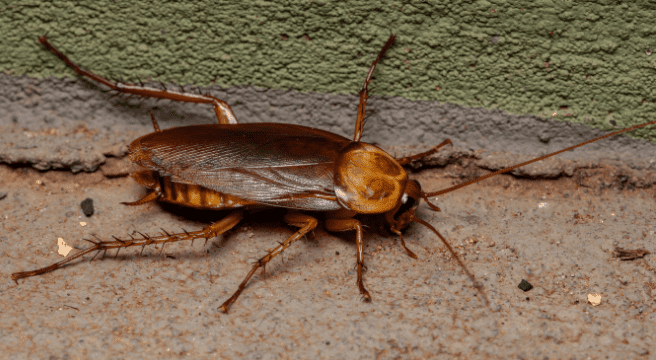
There’s one pest that every homeowner would rather not see inside their home – cockroaches. There are many distinct species of cockroaches, and each has their own unique characteristics. There are two popular types of cockroaches in the southeastern part of the US, but the American Cockroach is the largest and one of the most common out of the two. Here is a breakdown of the American cockroach and how to decide your plan of action to remove them from your home.
What is an American Cockroach?
The American cockroach is a major pest in the United States and is the largest of the home-infesting roaches. They are commonly known as the water bug, the Bombay canary, or the palmetto bug. This specific species is not native to United States, despite its name. They are typically reddish-brown with a yellowish figure eight pattern on the back of their head. They are oval shaped and range from 1 1/4″ to 2 1/8” in length.
Where are They Found?
American cockroaches are typically found outside, but it is not uncommon to find them indoors. During the summer months they can be found outside in areas like flowerbeds and underneath mulch piles. They will typically move indoors when they experience a notable change in the weather or food shortage. They prefer warm, moist, and dark environments such as basements or crawlspaces. These pests can enter structures through the sewer system, via human belongings, or by mass migration from other structures.
Are They a Threat?
The presence of American cockroaches in a home can pose a serious threat to your health. Cockroaches have been known to spread at least 33 kinds of bacteria, including E. Coli and Salmonella, along with different types of parasitic worms and other kinds of human pathogens. They have also been known to elicit year-round allergic reactions and asthma attacks due to their saliva, urine, and fecal droppings.
How Can I Prevent Them?
There are many ways to prevent roaches from entering your home. Here are some of our favorite ways to keep them out.
Finding these pests in your home can be quite alarming. Implementing cockroach prevention measures such as fixing leaks, sealing off entry points, and keeping kitchen and bathrooms clean will help keep these pests out. If this happens despite your best efforts at prevention, consider contacting a professional local pest control company that can help identify your pest, locate points of entry, and provide a prevention plan for your property to help keep roaches out.
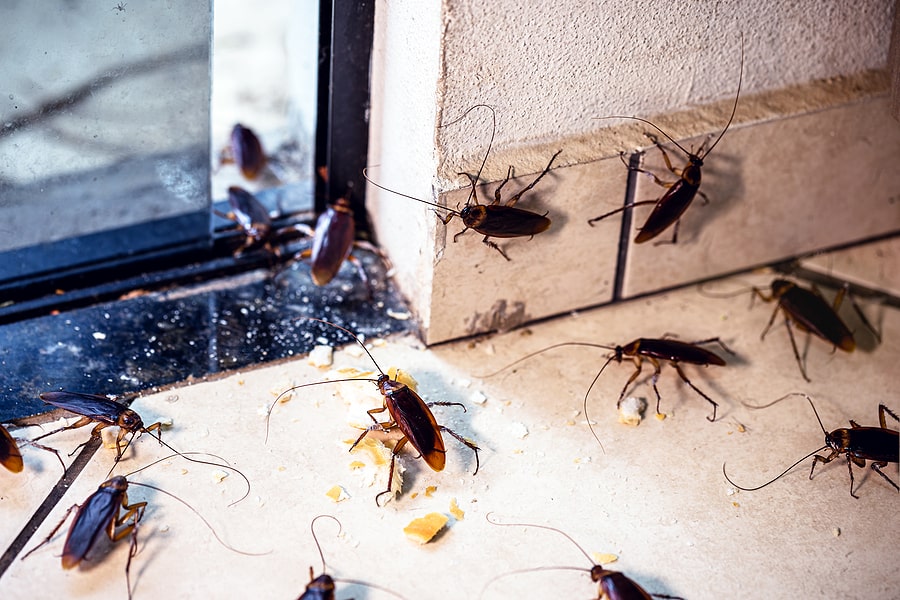
Roaches are resilient pests that have survived millions of years on Earth. Cockroaches are naturally tropical pests, preferring warm, humid habitats to thrive in. In fact, most species of roaches will die off at temperatures below 15 degrees Fahrenheit. Roaches have learned to adapt and are expert overwintering pests, making their way indoors to avoid exposure to cold temperatures and survive the winter.
There are four species of cockroaches in the United States that can survive year-round with the appropriate overwintering environment.
To answer the question above, roaches don’t necessarily die off in the winter. As long as they can find a warm place to shelter with a food source they can survive and reproduce year-round. The next question to ask yourself is, “How are they getting into my home?” Roaches can squeeze through openings as small as 3/16″ and will use any opening they find in your walls, siding, baseboards, and ceilings to get inside. Roaches are also notorious hitchhikers and will catch a ride indoors on bags, boxes, firewood, furniture, and appliances.
Keep roaches out this winter by:
If you have a problem with cockroaches or any other household pest, contact your local pest control company for an evaluation and treatment plan.
Mouse vs Rat: 5 Differences Explained
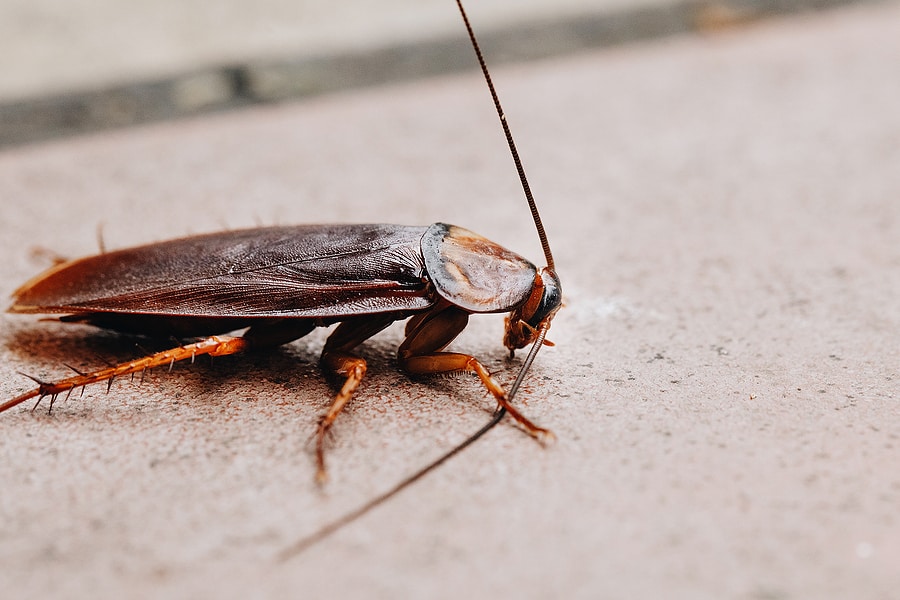
The cockroach might just seem like a creepy, annoying nuisance, but it can cause more damage than expected. Cockroaches transmit over 30 different kinds of bacteria – E. Coli, Salmonella, and more. In addition to this, they can also trigger asthma and allergy attacks as their droppings, saliva and shed skin contain allergens that increase asthma symptoms, especially in children.
As one of the most common household pests, it’s important to keep roaches under control to lessen the effects they cause. Here we breakdown the types of cockroaches you could be seeing in your home and how you can prevent them in the future.
While prevention can help keep cockroaches away, sometimes it’s best to get a professional involved. A local pest control company will be able to inspect your home and provide you with the best treatment and prevention plan going forward.
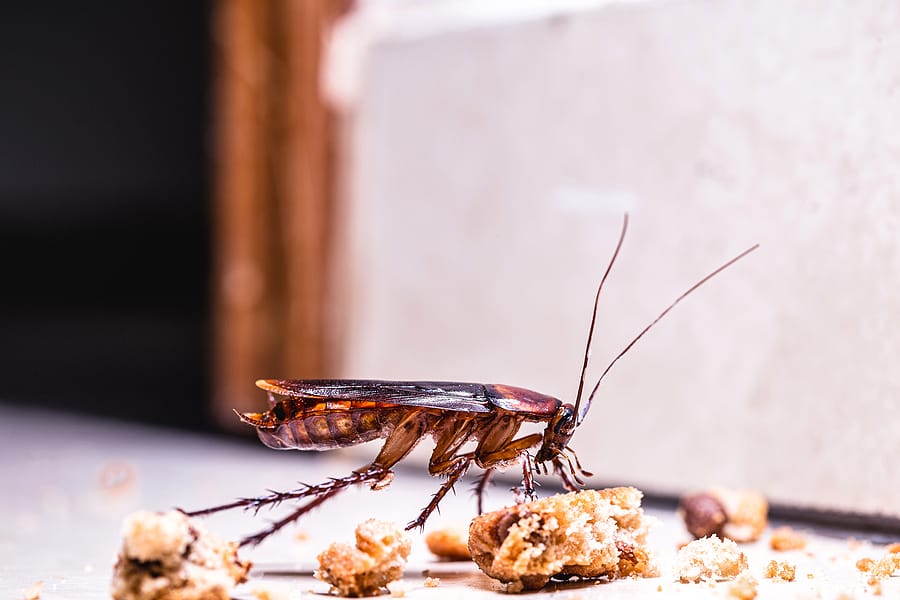
Your home provides warmth, shelter, and food – three things roaches are in search of this winter season. These pests will easily sneak in and infest your home if there are no preventative measures in place. Check out our top 3 ways to prevent cockroaches from entering your home.
Declutter Your Home
During the day, roaches tend to hide in dark secluded areas until nightfall arrives. By decluttering your home, you eliminate the chance of these pests from hiding out inside and finding items to use for shelter, such as cardboard or newspapers. Instead of using cardboard boxes for storage, switch them out for plastic storage containers. Always recycle and get rid of any old newspapers and unused cardboard boxes.
Seal Up Your Home
If you can see daylight coming through the outside of a door or window, chances are that cockroaches can get in. Roaches can fit into the smallest cracks or crevices leading inside the home. It’s important to inspect the exterior of your home frequently, always looking along the foundation, roof, attic, or crawlspace vents. If a smaller gap or hole is found, seal them using caulk. For larger holes, use steel wool or foam and for chimneys and attic vents use fine wire mesh.
Dry Out Your Home
Moisture will always attract roaches since they need water to survive. It’s important to check your home for leaking faucets, sinks, pipes, and even your refrigerators and appliances. If you notice a leak, make sure you get it fixed immediately.
While prevention can help keep these pests away, sometimes it’s best to call a professional. A pest control company will be able to thoroughly inspect your home, identify the type of cockroach you have, and provide you with the best treatment and prevention plan moving forward.
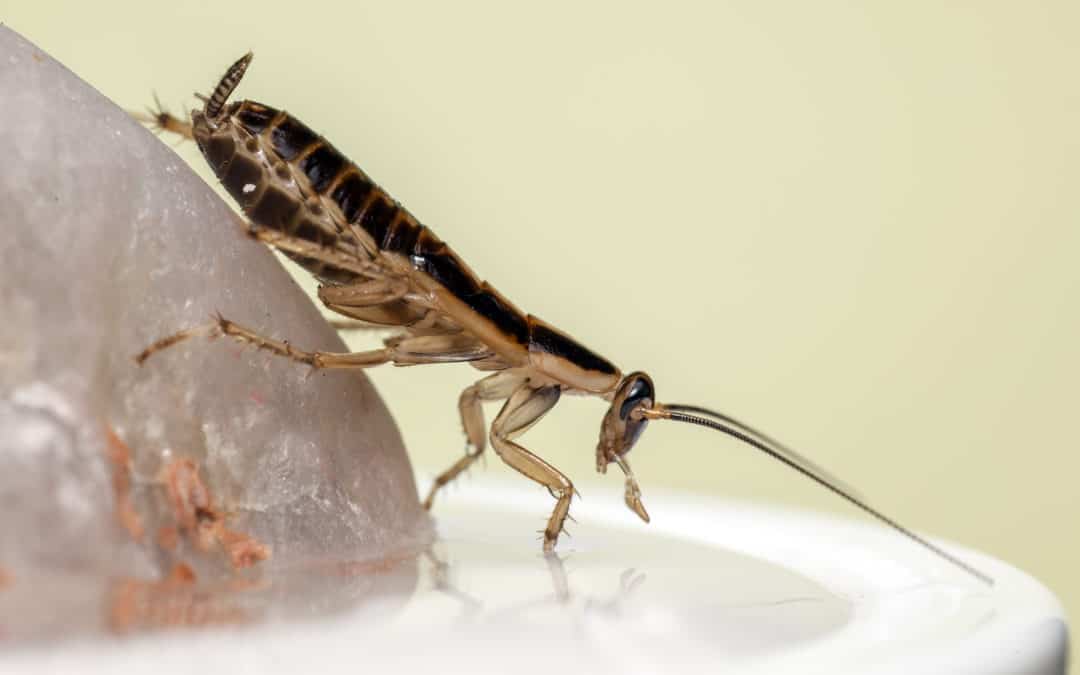
German roaches are one of the most common household pests and also one of the most difficult to get rid of. It is important to understand how to identify these cockroaches live and what they are attracted to in order to understand how to get rid of them.
These roaches are light brown to tan in color with 2 black horizontal stripes behind their heads. They are smaller in size (adults usually grow to about 1/2″ in length) and although they have wings, they rarely fly and prefer to run instead. They are most often found indoors, preferring warm humid environments like the ones found in your kitchen or bathroom. They will eat almost anything but prefer crumbs, spills, pet food, book bindings, soap, and toothpaste. German cockroaches are often brought into your home on dry goods, such as bags, boxes, cardboard, used appliances, and furniture.
German roaches are dangerous to humans because they can spread bacteria and contaminate surfaces with salmonella and E. coli. Their feces, cast skins, and saliva can cause allergic reactions which can subsequently trigger asthma.
Common signs of German cockroaches include droppings which are small and black and look like pepper, commonly found in drawers and cabinets and on the tops of doors; egg cases left behind by females; and a mild, musty odor that gets stronger as their populations grow.
These pests are nocturnal and usually only scavenge at night, making it difficult to know you have a cockroach infestation until it is already established. Once inside, German roaches can reproduce quickly, making them very difficult to eradicate. Each female is capable of producing 4 to 6 egg cases per life cycle and can live anywhere from 100 to 200 days.
Because they can be so hard to get rid of, the best way to eliminate German roaches is to prevent them in the first place. Here are some German roach prevention tips you can use in your home.
If you have a problem with roaches or any other pests, contact your local pest control company to properly identify the type of pest you are dealing with and recommend the most appropriate treatment plan going forward.
Are Carpenter Ants Active During the Winter?